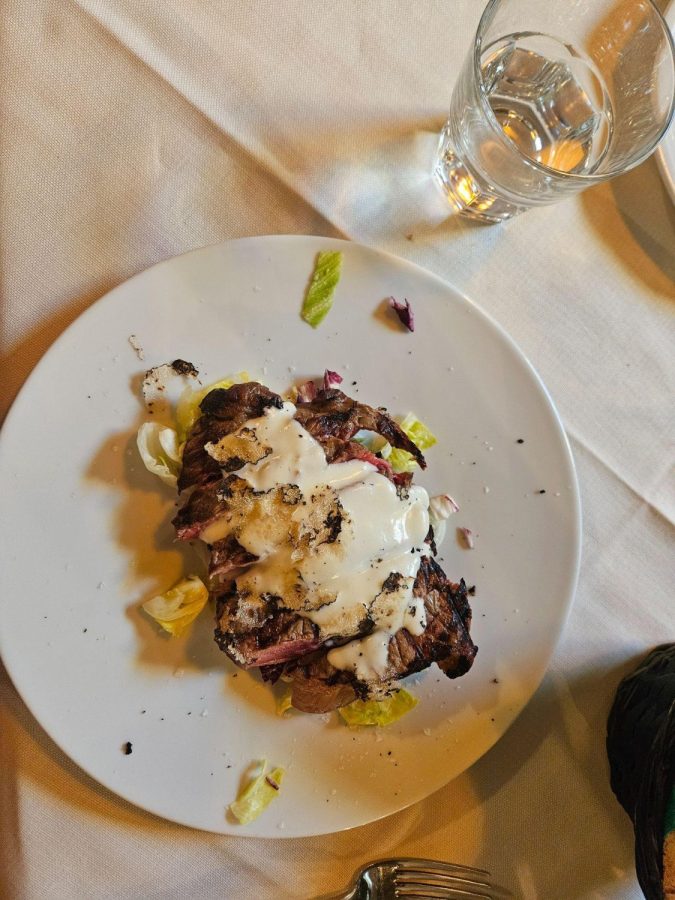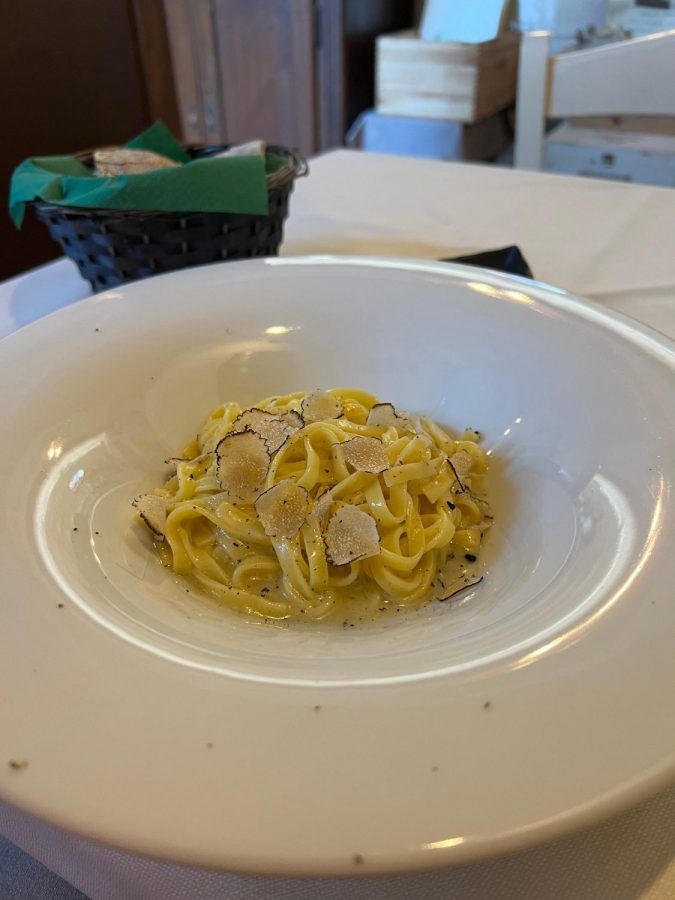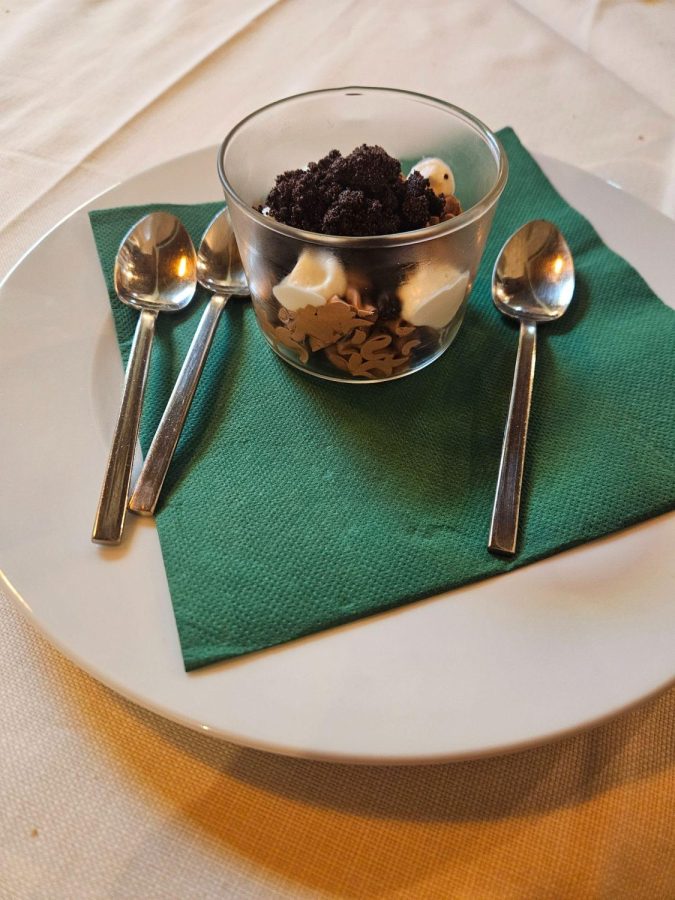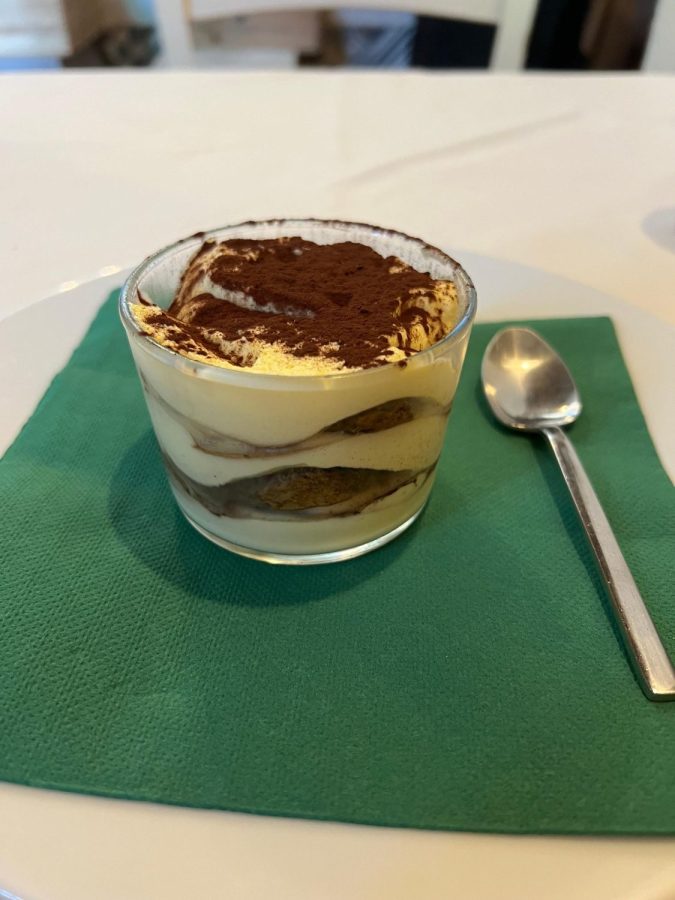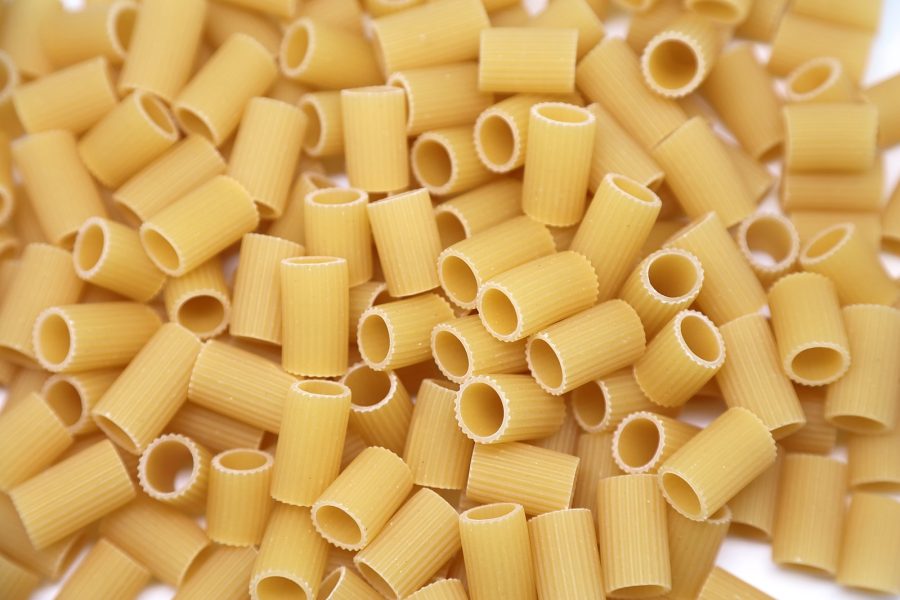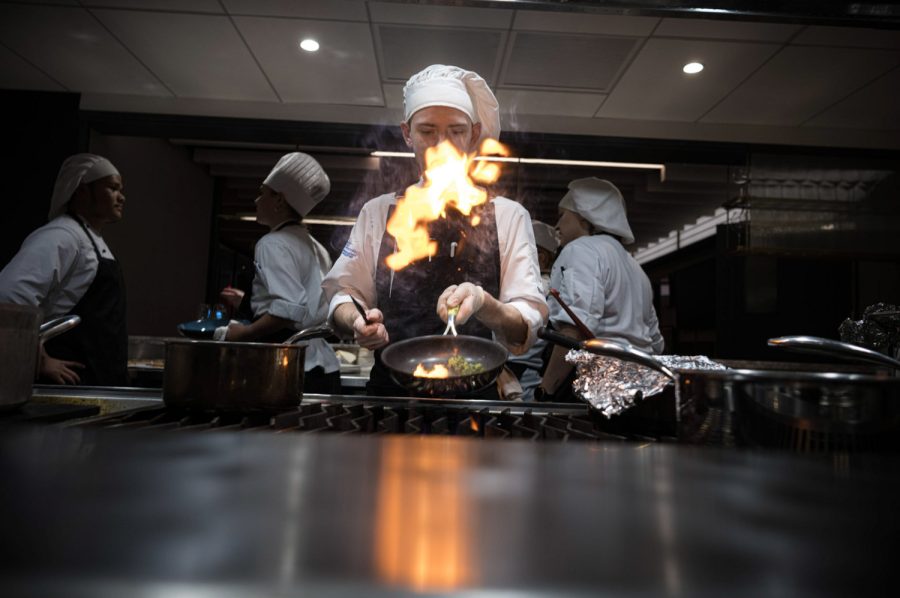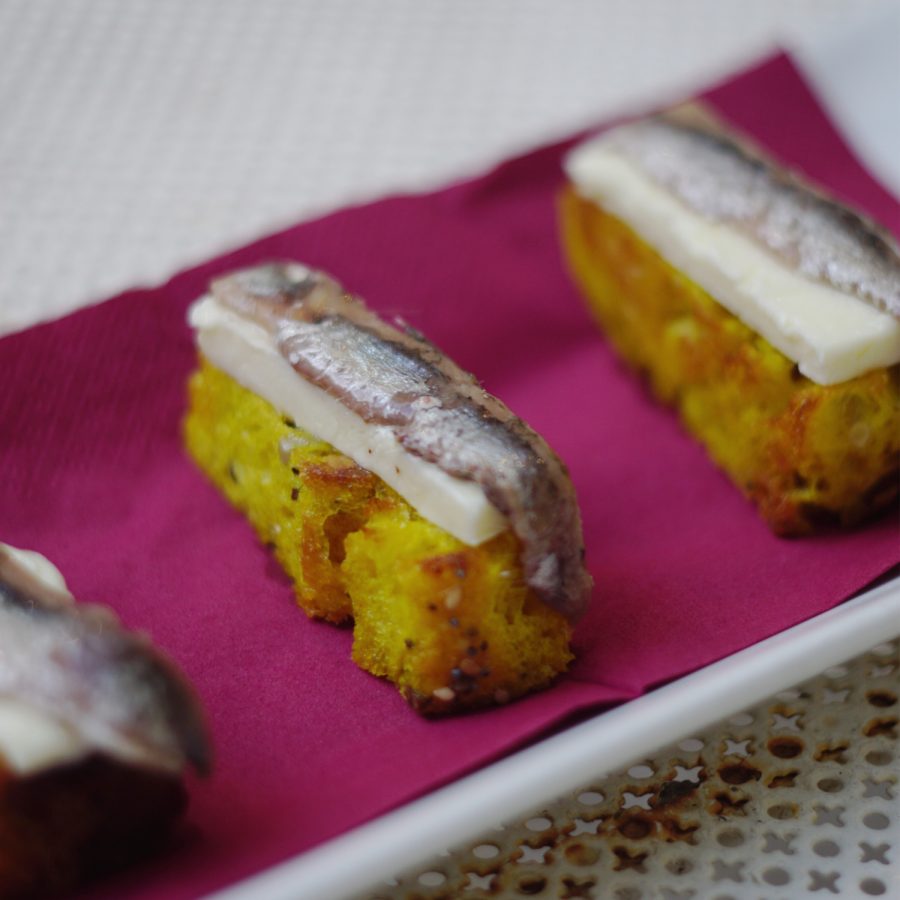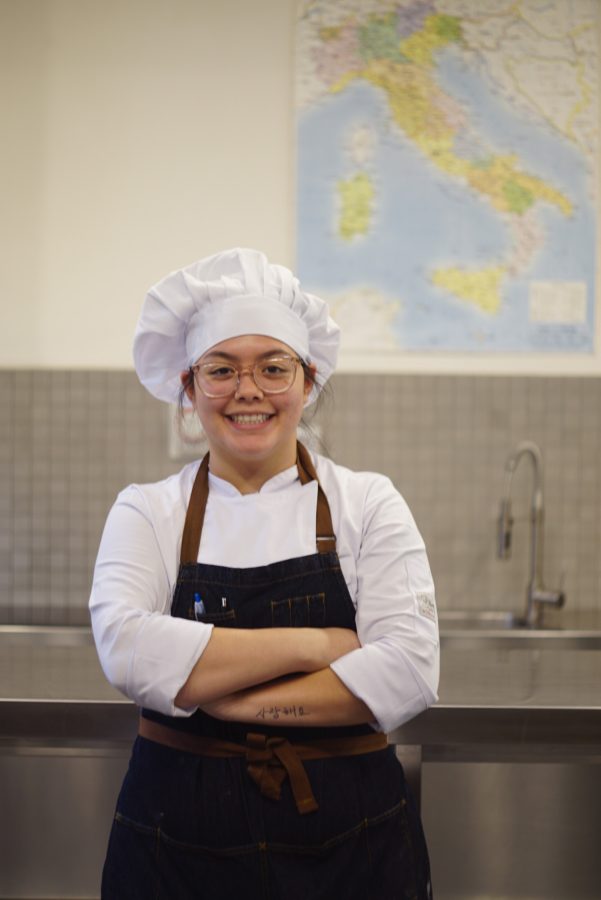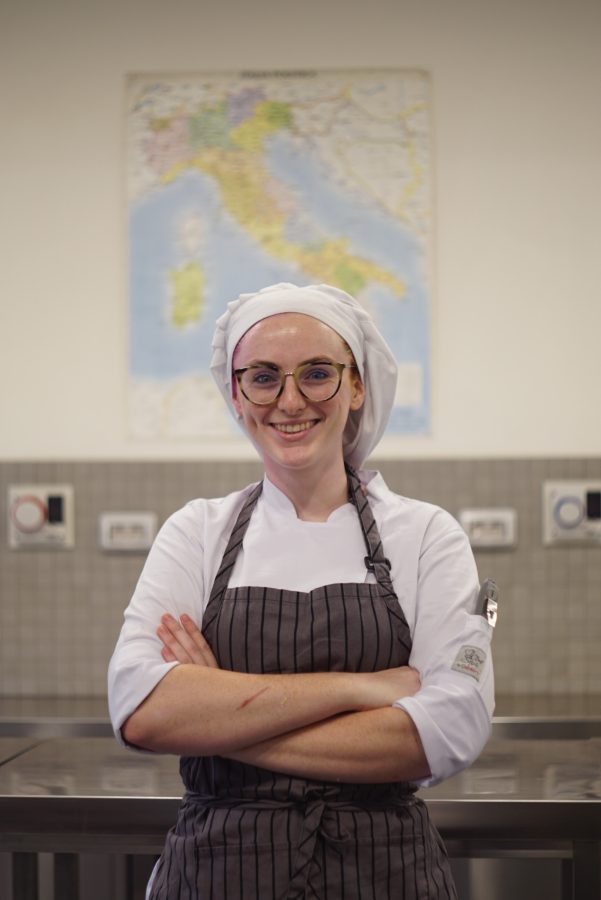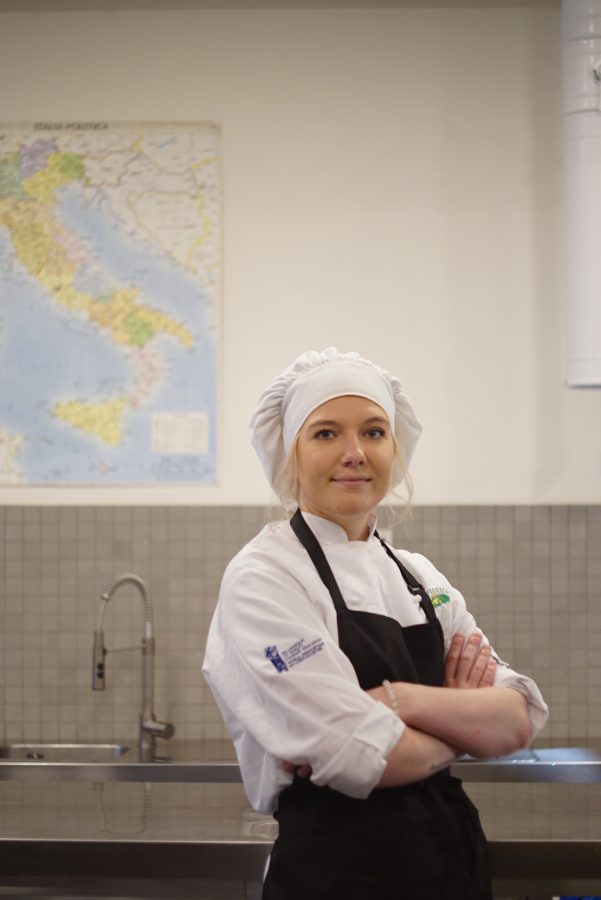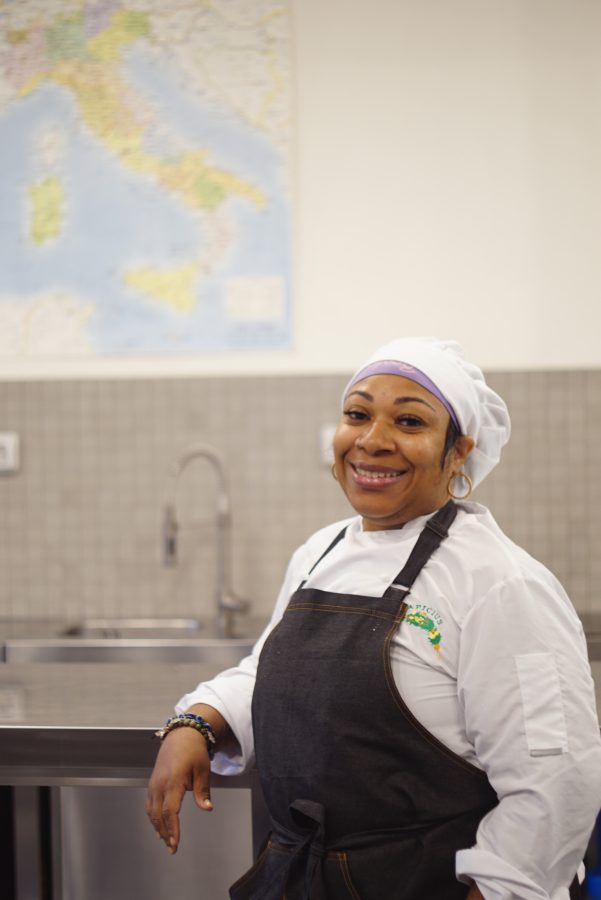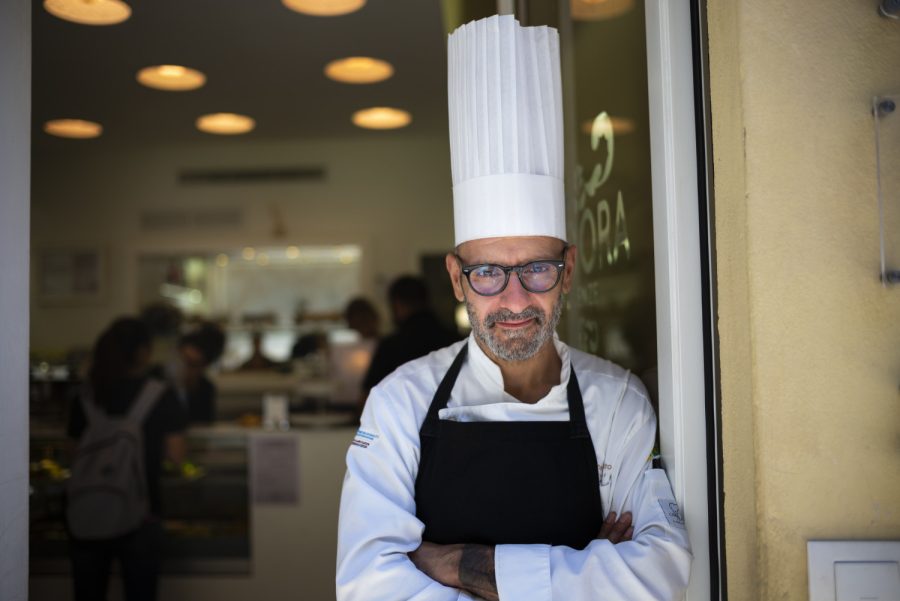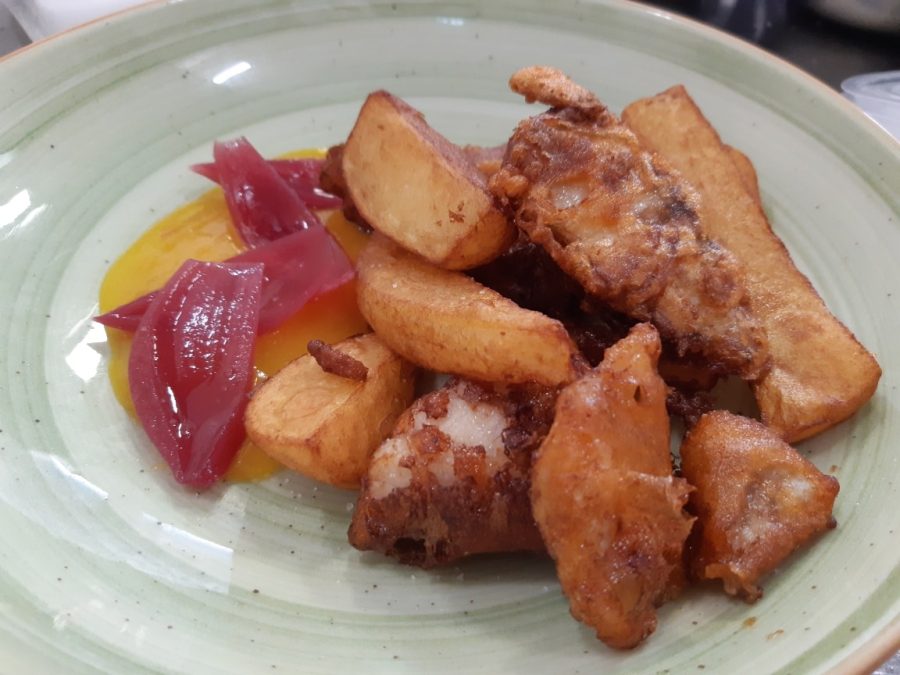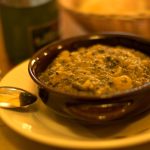The following article is a representation of the many traditional seasonal dishes throughout Florence
written by Hannah Bergmann, Margo Carroll, Xenaida Espinal, Evan How, Allison Isidro, Kelly Quito, Nolan Sperry & Natalie Zhu
Spring
Kicking it off with a fresh start of the season, spring is a beautiful time for new crops to grow in the blooming pleasant weather and warmer temperatures. Schiacciata alla Fiorentina, also known as Florentine flat cake, is a traditional 3 cm high, soft orange cake deeply rooted in Tuscan culinary culture that is associated with carnival celebrations, linking Italians to their historical identity. Originally, this desert was tied to being entitled as a final meal for prisoners before execution. This consists of flour, lard, sugar (powdered), eggs, cocoa powder, and orange zest. All these ingredients create a subtle taste with a hint of refreshing orange zest. Contrasting the orange flavor, the powdered cocoa/sugar is visually appealing and complements it with bitterness. On a side note, some people have modernized this dessert with an inside of cream, custard, etc.
Garmugia is a spring soup that originated between the 16th & 17th century in Lucca, Tuscany. This dish was considered a delicacy that only people of high class and royalty could afford to have prepared. It wasn’t considered part of cucina povera because the dish contains meat and the freshest vegetables only available at the start of March through April. Garmugia contains springtime vegetables such as artichokes, asparagus, fava beans and peas. These ingredients combined make a delicious soup that can combat spring sickness. This dish is also a very versatile one, as you can add leftover beef or pork without changing the flavor profile.
Summer
One common dish in the summer time that almost every local Italian restaurant in Florence has on the menu is the Caprese Salad. It typically includes sliced raw tomatoes and slices of fresh mozzarella topped with some raw basil leaves and a drizzle of olive oil and balsamic vinaigrette. This dish is very common in the summer because tomatoes and basil are in peak season during this time. The production of mozzarella in Italy is also typically at its peak during the warm summer months. All of these ingredients being readily available fresh and in season makes the caprese salad a delicious appetizer to cool off in the hot summer months of Italy. This dish is also an incredible example of the Mediterranean diet in Italy. The raw, fresh ingredients and simplicity in steps along with the balanced nutrients in the caprese salad are all a part of the Italian food principles.
Panzanella is a Florentine summer salad, consisting of slightly stale bread, red onions, tomatoes, olive oil, vinegar, salt, and pepper, with occasionally cucumbers or basil. Stale bread is partly used because it’s able to soak up flavors from other ingredients easier, allowing for a more flavourful dish. However, it also was utilized for another benefit in previous centuries when bread would go stale but people wanted to repurpose it. The dish reflects the freshness and seasonality valued in Italian cuisine through the use of certain vegetables all grown in the summer months, as well as preserving Italian tradition because of the dish’s simplistic touch. The dish’s vegetables, such as cucumbers and tomato, allow for a light and refreshing effect, and the red onions and vinegar compliment that with tang. The crisp dish quenches dehydration and exemplifies seasonality, making it the perfect summer lunch option.
Fall
Ribollita is a classic dish for the fall. It’s a savory soup or porridge consisting of leftover bread, cannellini beans, kale, cabbage and various other staple vegetables such as carrot, beans, chard, celery, potatoes, and onion. This dish has roots from the Middle Ages to Renaissance cuisine known as cucina povera where zero waste, frugality and simple tastes are very valued. In cucina povera, the most popular vegetables are those that grow close to the ground. It was a common belief that based on your social status, your diet was reflected. The wealthy and noble ate things higher from the ground, while the poor ate close to the ground. So root vegetables were what was mostly available amongst peasants. The word “ribollita” means “reboiled” because this soup is cooked by repeatedly simmering it to enhance its flavor and consistency. There are many variations of this dish because of the many generations of use, but it will always hit that hearty warm spot we crave during the fall.
Following the fall season, Pumpkin is in its prime. A staple in fall Italian cuisine is Ravioli di zucca, which translates to pumpkin ravioli. It sounds very simple, and it is. It definitely follows the Mediterranean diet as it doesn’t contain many ingredients. Traditionally rooted in Northern Italy, this is a common dish amongst most middle class households. This dish consists of sweet pumpkin, or squash, which is mixed in with parmigiano reggiano. This meal is also balanced with some spices as it can be topped with sage. Historically speaking, ravioli di zucca is a seasonal dish. It’s only served around August through October as that is the pumpkin’s prime time during the year. Fresh ingredients are important when it comes to seasonal dishes as it greatly impacts the taste and texture. While it’s okay to eat pumpkin during other times of the year, it’s recommended to eat it during its season as the texture will be more soft, and sweet.
To conclude, ravioli di zucca can be considered a traditional Italian seasonal dish as it follows the Italian concept of cucina povera. It means simple meals that are local to home, yet create delicious and healthy meals.
Winter
Minestrone is a popular and iconic winter dish in Italy. It embodies the seasonality and regional tradition that is held high in Italian cuisine. Minestrone is a hearty vegetable soup that varies depending on the region and what ingredients are locally available. During the winter months, minestrone is filled with robust vegetables that tend to thrive in the cold. Among these vegetables are cabbage, potatoes, carrots, leeks, legumes, and Swiss chard. These ingredients not only provide sustenance and warmth but also provide representation for Italians and their connection with the land. Minestrone helps to embody the “cucina povera” philosophy by using simple and seasonal ingredients to make a flavorful and nourishing dish. Minestrone emphasizes the Italians’ respect for freshness, sustainability, and their land. As such, minestrone is a perfect example of how winter and other seasons can affect a dish, and represent Italian culture.
Pasta al forno was created during the Renaissance, and was originally made for the nobility who enjoyed a more elaborate meal, excluding cucina povera. Pasta al forno is a baked pasta, often resembling lasagna; al forno meaning from the oven. In Central Italy, they add béchamel sauce sometimes along with a tomato based meat sauce and add cheese like Parmigiano Reggiano. The dish is then cooked until the top becomes crispy. During the winter months, this meal is cooked for families and is a symbol of home. Pasta al forno was created to satisfy the nobility but then evolved into a comfort meal for many families.
Bringing It All Together
In conclusion, throughout Florence dishes of all seasonality are highly valued. Part of Florence’s rich tradition is promoting the use of seasonal ingredients in their cuisine. The dishes above all promote this appreciation of Florentine culture.
Works Referenced
Arteleonardo. “Leonardo Da Vinci Art School – Florence, Italy – – Tuscan Traditional Dishes: Schiacciata Alla Fiorentina.” Arteleonardo.com, Arteleonardo, 2025, www.arteleonardo.com/de/blog/169/tuscan-traditional-dishes-schiacciata-alla-fiorentina.
“Schiacciata Fiorentina (Florentine Sweet Cake).” Cesarine, 14 Feb. 2025,
cesarine.com/en/blog/cesarine-cookbook/schiacciata-fiorentina-recipe?rand=sfwn8z0h. Accessed 11 July 2025.
https://www.mykindofitaly.com/post/garmugia-lucchese-ode-to-springGarmugia Lucchese – Ode to Spring
https://www.italianrecipebook.com/garmugia-spring-soup-from-tuscany/Garmugia (Spring Soup From Tuscany) : Italian Recipe Book
Hix, Mark. “Mark Hix’s Hearty Minestrone and Other Italian Winter Warmers.” The Telegraph, Telegraph Media Group, 1 Dec. 2022,
www.telegraph.co.uk/food-and-drink/columnists/mark-hixs-hearty-minestrone-italian-winter-warmers/?ut m_source=
“Minestrone – the Most Popular Soup Born in Italy: Recipe, History of Appearance.” Italy for Me, 15 Aug. 2023, en.italy4.me/italian-food/italian-soups/minestrone.html#google_vignette.
Credits
Summer – Hannah Bergmann and Margo Carroll
Winter – Nolan Sperry and Allison Isidro
Spring – Natalie Zhu and Kelly Quito
Fall – Evan How and Xen Espinal
